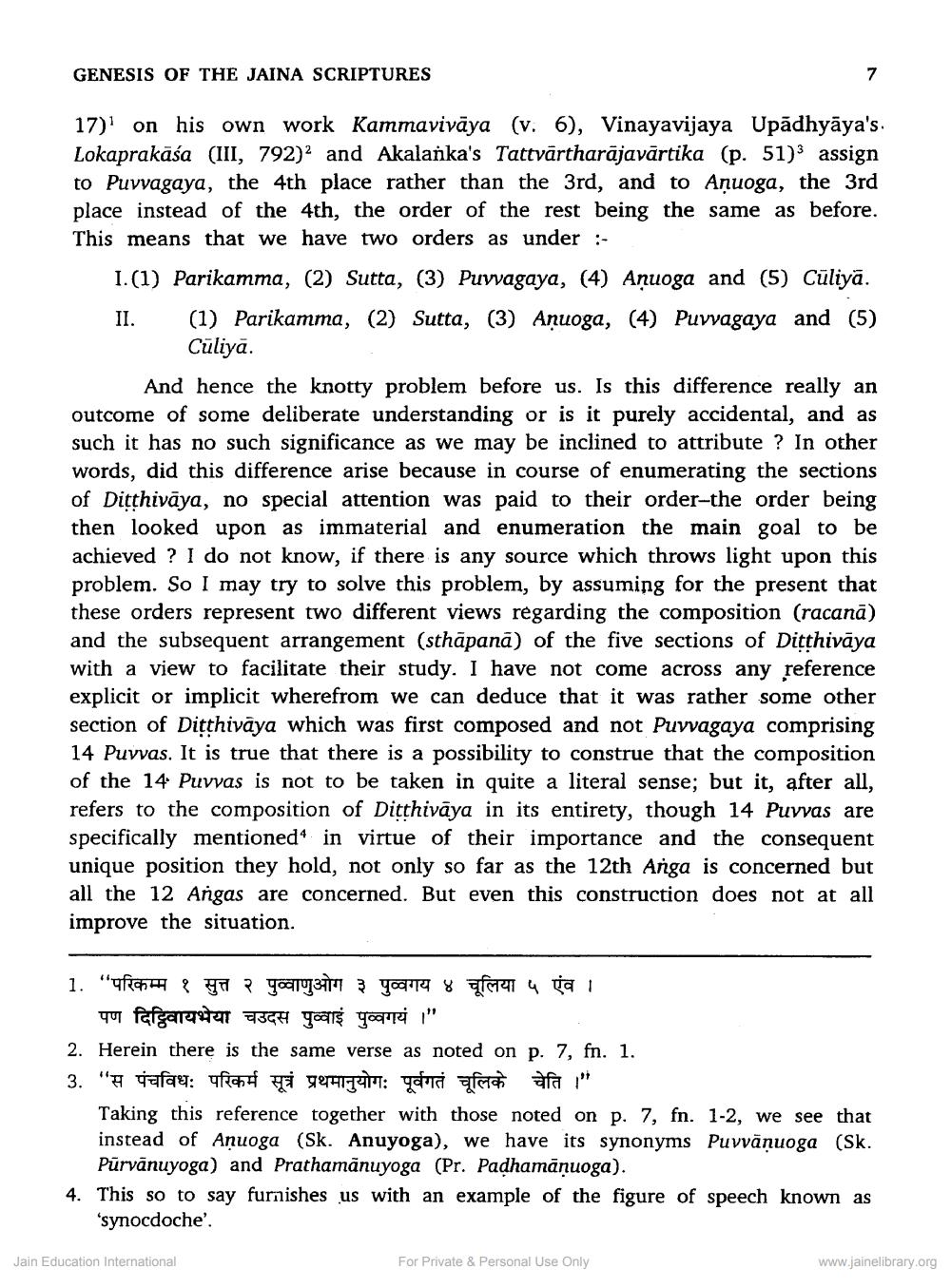________________
GENESIS OF THE JAINA SCRIPTURES
17) on his own work Kammavivāya (v. 6), Vinayavijaya Upadhyāya's. Lokaprakāśa (III, 792)2 and Akalanka's Tattvārtharājavārtika (p. 51)3 assign to Puvvagaya, the 4th place rather than the 3rd, and to Aņuoga, the 3rd place instead of the 4th, the order of the rest being the same as before. This means that we have two orders as under :
1.(1) Parikamma, (2) Sutta, (3) Puvvagaya, (4) Aņuoga and (5) Cūliyā. II. (1) Parikamma, (2) Sutta, (3) Aņuoga, (4) Puvvagaya and (5)
Cūliyā.
And hence the knotty problem before us. Is this difference really an outcome of some deliberate understanding or is it purely accidental, and as such it has no such significance as we may be inclined to attribute ? In other words, did this difference arise because in course of enumerating the sections of Ditthivāya, no special attention was paid to their order-the order being then looked upon as immaterial and enumeration the main goal to be achieved ? I do not know, if there is any source which throws light upon this problem. So I may try to solve this problem, by assuming for the present that these orders represent two different views regarding the composition (racana) and the subsequent arrangement (sthapana) of the five sections of Ditthivāya with a view to facilitate their study. I have not come across any reference explicit or implicit wherefrom we can deduce that it was rather some other section of Ditthivāya which was first composed and not Puvvagaya comprising 14 Puvvas. It is true that there is a possibility to construe that the composition of the 14 Puvvas is not to be taken in quite a literal sense; but it, after all, refers to the composition of Ditthivāya in its entirety, though 14 Puvvas are specifically mentioned in virtue of their importance and the consequent unique position they hold, not only so far as the 12th Anga is concerned but all the 12 Angas are concerned. But even this construction does not at all improve the situation.
1. "परिकम्म १ सुत्त २ पुव्वाणुओग ३ पुव्वगय ४ चूलिया ५ एंव ।
पण दिट्ठिवायभेया चउदस पुव्वाइं पुव्वगयं ।" 2. Herein there is the same verse as noted on p. 7, fn. 1. 3. " Jafae: fick han gernen: gorri arctat afa 1"
Taking this reference together with those noted on p. 7, fn. 1-2, we see that instead of Anuoga (Sk. Anuyoga), we have its synonyms Puvvänuoga (Sk.
Pūrvānuyoga) and Prathamānuyoga (Pr. Padhamāņuoga). 4. This so to say furnishes us with an example of the figure of speech known as
'synocdoche'.
Jain Education International
For Private & Personal Use Only
www.jainelibrary.org




